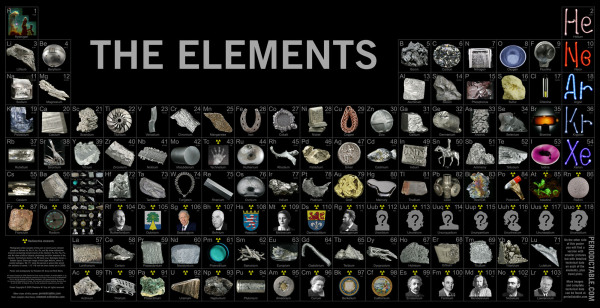“It took less than an hour to make the atoms, a few hundred million years to make the stars and planets, but five billion years to make man!” -George Gamow
But how was it that this happened? Sure, the Universe may have started off with hydrogen and helium alone, but when we look around at the world today -- at our world in particular -- there's so much more than that.
 Image credit: Theodore Gray, via http://theodoregray.com/periodictable/Posters/index.posters.html.
Image credit: Theodore Gray, via http://theodoregray.com/periodictable/Posters/index.posters.html.
Good thing, too, because without it, the molecular combinations essential to our existence wouldn't be possible! There are many different ways that stars create (and destroy) various elements, but where did the ones essential to us come from?
 Image credit: D. López (IAC), which is A. Oscoz, D. López, P. Rodríguez-Gil and L. Chinarro, from http://www.ing.iac.es/.
Image credit: D. López (IAC), which is A. Oscoz, D. López, P. Rodríguez-Gil and L. Chinarro, from http://www.ing.iac.es/.
From a cosmic, romantic slow dance. Come find out just how important the slow burn of the s-process is!
- Log in to post comments

Is it known the ratio of neutrons that are absorbed before decaying into protons and lighter particles? Do the products of the neutrons decay play a role in the formation other elements? I guess that electrons will be captured to form atoms and neutrinos scape from the star but don't know how protons behave.
Thanks!
With the Universe being 13.8 Billion years old and our solar system around 5 billon years that leaves for the at least 2 sun systems only 9 billon years for creating and releasing these elements. One has to assume they have been in existence in parallel and merged then to a new molecular cloud?
@Andreas #2: In fact, the 9 (8-1/2) billion years you compute is plenty of time. The heaviest elements (i.e., pretty much everything beyond oxygen) are formed mostly in supernovae and their progenitors (see http://en.wikipedia.org/wiki/Stellar_nucleosynthesis). Those are the most massive stars, which are also (because they're more massive) the shortest lived (see http://en.wikipedia.org/wiki/Stellar_evolution).
Briefly, stars of more than two or three solar masses live less (sometimes much less!) than half a billion years, so there has been time for many cycles of these stars to produce the heavy elements needed to construct rocky planets.
@Jorge #1: If you're asking about neutrons inside supernovae, they aren't really going to be isolated (so-called "bare") neutrons. Rather, you will find lots and lots of nuclei, in the core of a massive star or ongoing supernova. The processes in there will produce neutrons which get absorbed by those nuclei within milliseconds or less, compared with the ~800 second neutron lifetime. You may want to look up "R-process" and "S-process" in Wikipedia to learn more about what happens and how heavy elements are synthesized.
If you're asking about the neutrons produced in primordial nucleosynthesis (i.e., after the hot Big Bang cooled enough that quarks could stay together to form nucleons), the current best estimate is that the neutron/proton ratio was about 14%. The cross-sections for nuclear formation are such that essentially all of those neutrons were merged into He-4 nuclei (about 8% by weight of all matter), with the rest going into small quantities of deuterium and He-3. See https://en.wikipedia.org/wiki/Big_Bang_nucleosynthesis#Neutron-proton_r….
What about the collisions of neutron stars creating heavy elements, is that true or tbd?